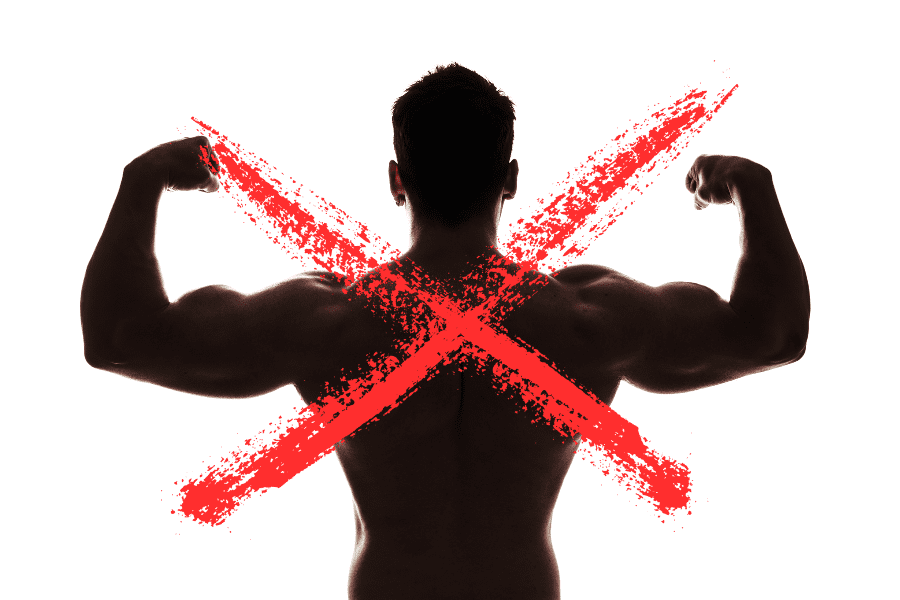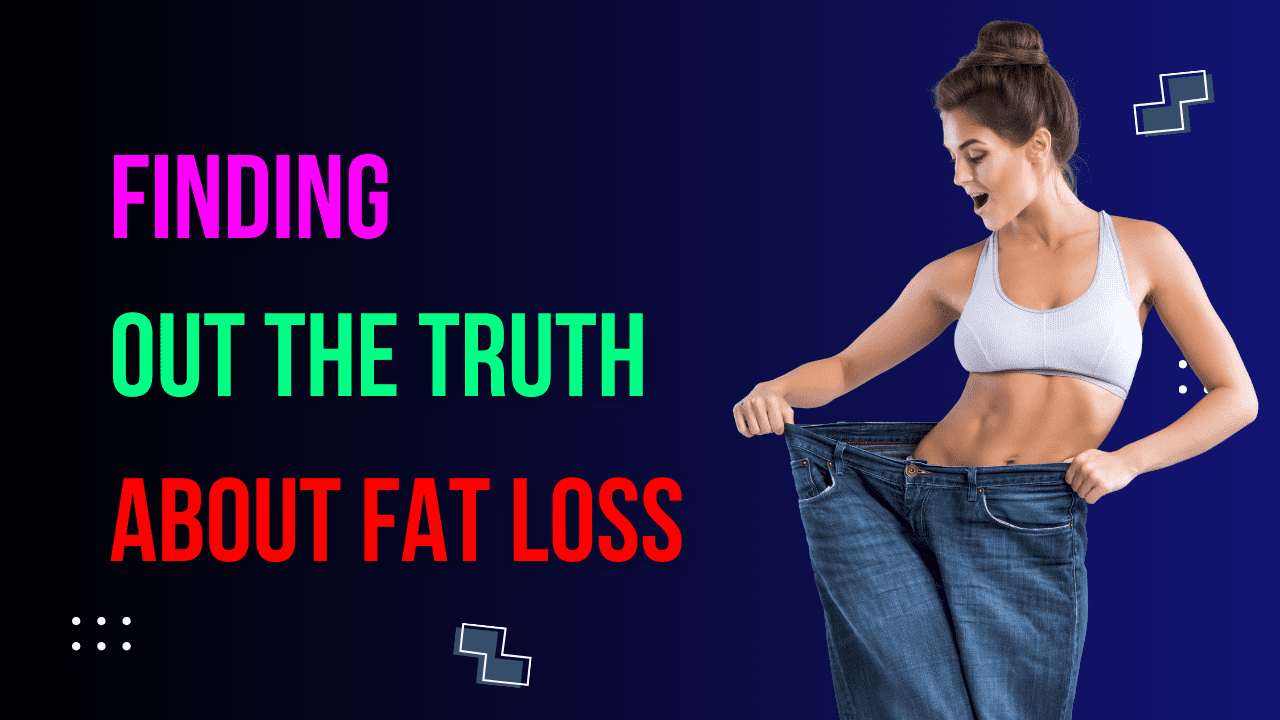Table of Contents
Intro
Dieting and controlling your body form have never been more important to society. A lot of information and pictures show people with perfect bodies, so it’s not a surprise that a lot of people are interested in the thought of focused fat loss. Focusing on “problem areas” to shape your body has made a lot of exercise tips and plans that claim to offer quick answers popular. Many of these pieces of advice, though, are based on false beliefs and not on science. There is a lot of proof that the myth of spot reduction is not true, but many people still believe that they can get rid of fat in certain areas of their bodies by doing particular exercises.
By showing you the science truths about fat loss and body shape, this blog post aims to bust these myths. By learning how fat is stored and used, readers will be able to find healthier, more effective ways to control their body makeup. Our goal is to steer our readers away from quick fixes and toward long-term health and exercise habits by using a mix of science information and useful tips.
Common False Ideas About Targeted Fat Loss

Targeted fat loss, also called “spot reduction,” is a concept that has become central to exercise and weight loss programs all over the world. This idea says that working out certain parts of the body will help you lose fat in those places. For example, people who want to lose belly fat are told to do core exercises. People who want to lose arm fat are told to do arm exercises. This way of losing fat, on the other hand, is fundamentally wrong and not backed up by science.
What Draws People to Quick Fixes
People are interested in spot reduction because it promises benefits that can be seen quickly. It feeds into the desire for a “shortcut” to a better body without having to make big changes to how you live. Because of this, there are a lot of exercise plans and goods that claim to work miracles. Even though these ways are very famous, they don’t work as promised.
The Truth About How Fat Is Distributed
The way fat is distributed in the body is mostly controlled by genes and can’t be changed just by working out. It’s not just the place being worked out that burns fat for energy. The body does it all over. This process is controlled by the body’s biological needs and can’t be made to go in a certain direction. Studies have shown over and over that spot reduction movements don’t help people lose a lot of fat in the places they are supposed to.
Missed Opportunities and Letdowns
Focusing on spot reduction can make people angry and let down. A lot of people spend a lot of time and energy working out certain parts of their bodies but don’t see much or any change in those areas. This can make people lose interest in working out, which can stop some people from continuing their fitness travels. Focusing only on spot reduction can make people forget how important it is to have a well-rounded fitness routine with cardio, strength training, and flexibility movements, all of which are important for your general health and well-being.
Using science to figure out how fat loss works

The way to lose fat is based on rules that come from biology and physiology. Contrary to what most people think, focused workouts cannot help you lose body fat in just one area. Fat loss is actually a general process that is affected by a lot of different things working together. Let’s look at the science ideas behind how our bodies store and burn fat.
What Energy Balance Does for You
Energy balance, or the link between how much energy you take in and how much energy your body uses, is at the heart of fat loss. The body saves extra energy as fat when we eat more calories than we burn. When we eat fewer calories than we burn, on the other hand, our bodies use fat stores to make up the difference, which causes us to lose fat.
How your body stores and burns fat
Triglycerides are the form of fat that is stored in adipocytes (fat cells) all over the body. Hormones like adrenaline and noradrenaline break down triglycerides into fatty acids and glycerol when the body needs energy. These are then released into the bloodstream and used as fuel. This process, called lipolysis, happens all over the body, not just where you’re working out.
The Myth of Getting Rid of Spots
It has been shown over and over again by science that spot reduction is not true. The Journal of Strength and Conditioning Research released a study that showed people who did leg workouts did not lose more fat in their legs than in other parts of their bodies. The body gets energy from all of its fat stores, not just the spot that is being worked out.
Why whole-body exercise is important
For fat loss to work, you need to work on your whole body. This involves both physical activity, which burns more calories overall, and strength training, which makes muscles bigger and, in turn, speeds up the metabolism. By making you burn more calories throughout the day, these tasks create an energy imbalance that makes you lose fat all over your body.
Changes in hormones and genes
It’s also important to know how hormones and genes affect where fat is stored and how much you lose. These things can change where fat is kept and how easily it is burned, which is why fat loss trends are different for each person. Knowing this can help you set reasonable goals and make plans that work with your body’s natural features.
Strategies That Work to Lose Weight

Knowing how fat loss works scientifically makes it easier to get and stay in a healthy body makeup. To lose fat effectively, you shouldn’t focus on specific areas. Instead, you should take a whole-person method that includes food, exercise, and lifestyle choices. Here are some ways to lose fat that have been shown to work:
- Getting the right amount of nutrients
The main thing you need to do to lose fat is to eat fewer calories than your body burns. Using food to make a doable caloric shortage can help you lose fat slowly and permanently.
How Good the Food Is: Focusing on whole foods like fruits, veggies, lean meats, whole grains, and healthy fats can help you lose fat and improve your health as a whole. These foods give you important nutrients and help you feel full, which makes it easier to keep your calorie balance. - Getting regular exercise
Cardiovascular exercise: Walking, running, riding, and swimming are all activities that raise your heart rate and burn calories, which helps you reach a caloric deficit. Using different levels can help you lose fat and keep your heart healthy.
Strength training: Doing strength training exercises, like lifting weights or doing exercises with your own body, makes you build muscle. This makes your metabolism go up, which means your body burns more calories even when it’s not doing anything. As fat loss continues, having more muscle mass also helps you look leaner. - Being steady and patient
Losing fat is a slow process that needs constant work over time. While quick fixes and fad diets may work for a short time, they usually cause people to gain the weight back. Making changes to your food and workout habits that last is important for long-term success. - Thoughts on Lifestyle
Sleep and Dealing with Stress: Getting enough sleep and dealing with stress well are very important for losing fat. Hormonal balance can be thrown off by not getting enough sleep or being under a lot of stress. This can change hunger cues and fat stores.
Hydration: Getting enough water is important for your health and can help you lose weight by making you feel full and speeding up your metabolism. - Making strategies fit each person
It is very important to understand that everyone’s body reacts differently to food and exercise. Effective fat loss plans should be tailored to each person’s wants and situations because of things like age, sex, genetics, and way of life.
Conclusion

There are a lot of lies and false beliefs about losing fat, especially about the idea of “spot reduction.” As we’ve seen, the science behind losing fat doesn’t back up the idea that certain workouts can get rid of fat in certain areas of the body. Instead, losing fat is a process that works throughout the body and depends on making a caloric shortfall through a healthy diet, regular exercise, and other healthy living choices.
Taking a more complete look at health and fitness not only works better, but it also helps with long-term health and resilience. People can make changes to their body composition that last by focusing on balanced eating, doing a mix of cardio and strength training routines, and remembering how important it is to get enough sleep, deal with stress, and stay hydrated.
It’s important to be patient and consistent when trying to lose fat. Instead of chasing quick fixes, you should commit to a healthy lifestyle. Don’t forget that the goal is not just to lose fat, but also to make your body healthy, stronger, and more durable.
Getting rid of the myths about spot reduction and basing your efforts to lose fat on science and natural health practices will not only get you better results, but it will also make your life better in general. Let’s get past false beliefs and follow the road to real health and happiness.
Discover More
If this article made you happy and taught you something, I’m sure our next article will do the same for you. Each piece is carefully written to help you understand things better and enjoy reading more. So, to keep exploring and having fun, just click on this link to go to our next story.
The lies of enzyme supplement. You are being deceived. – ReViewMaster DEN (rvmden.com)
Choosing Your File System Wisely: NTFS vs FAT32 vs exFAT Compared – ReViewMaster DEN (rvmden.com)



